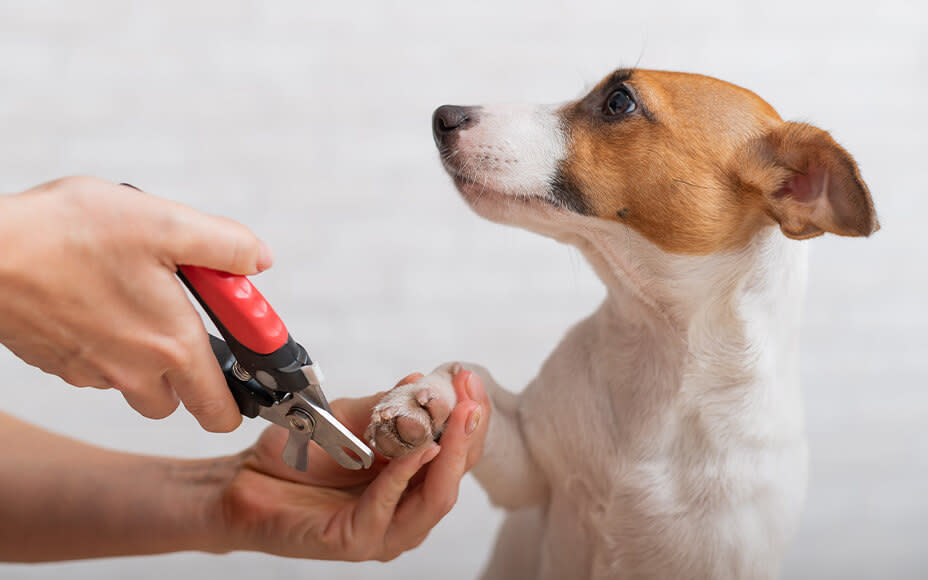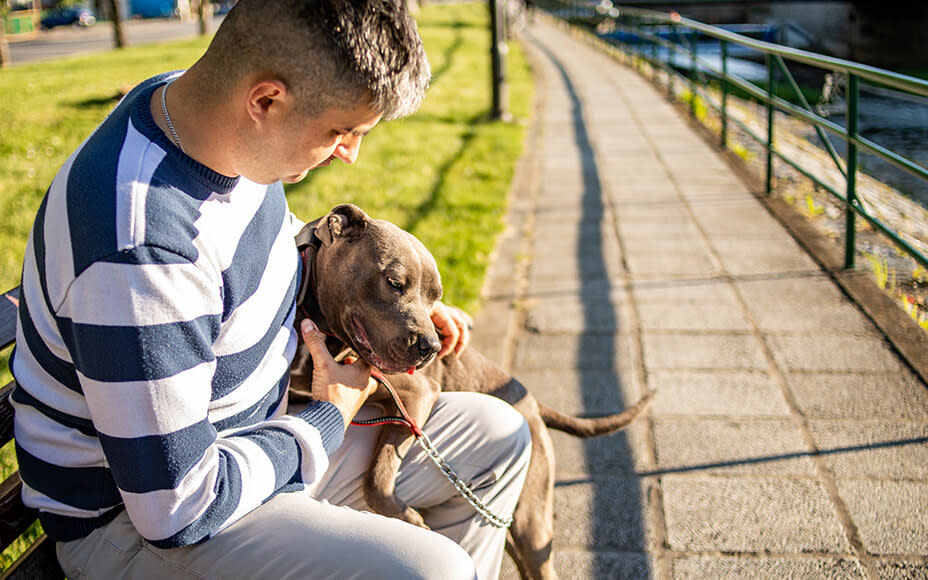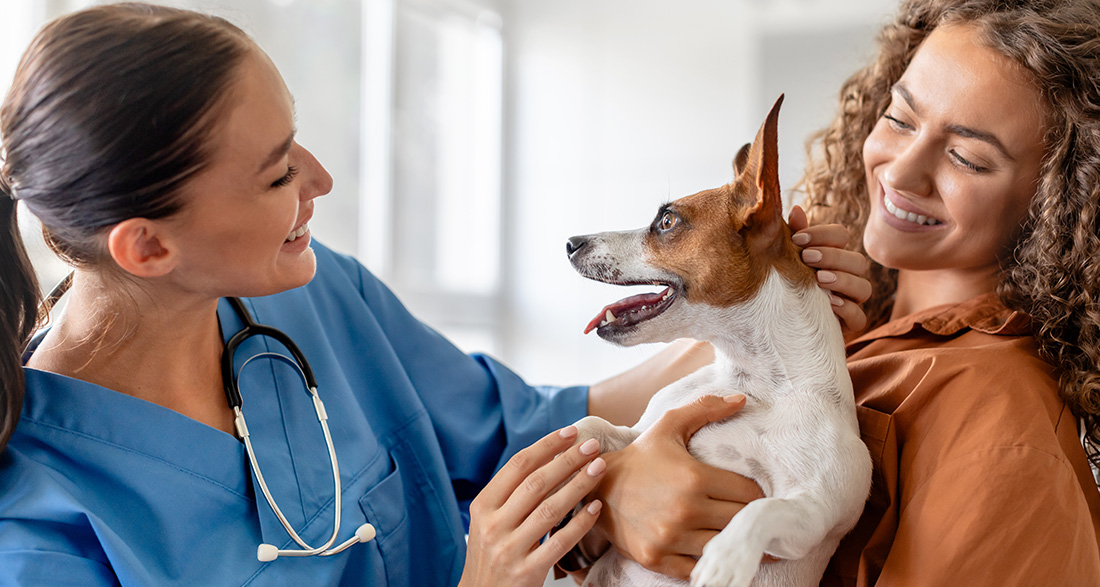If your next visit to the vet is on the horizon, read through our best tips and tricks on what you can practice with your dog to make the experience more relaxed for both of you.
The visit to the vet is not often a favorite activity for many dogs and their owners. To ensure your canine companion goes through the next examination more relaxed, you can practice a few things at home.
Practice Allowing Touch
Start practicing with your dog from the time he comes to you as a puppy, teaching him to be touched anywhere on his body. This is crucial not only for regular vet visits but also in emergencies when other people may need to touch and examine your dog.
Regularly practice with your dog so that you can:
- Hold all paws for a few minutes.
- Examine and check the teeth by looking into the mouth.
- Check the ears.
- Touch and examine the belly.
- Lift him onto your arms.
Some of these exercises are important regardless of the upcoming vet visit. For example, if you want to trim your dog’s claws, he needs to allow you to hold his paws. Brushing your dog’s teeth is also part of their grooming routine and should be trained early.

Practice Being Relaxed Around Many Dogs
Another crucial exercise for preparation for vet examinations is ensuring your dog is relaxed around other animals. In a vet’s office, you often encounter other dogs, cats, rabbits, or other small animals.
If your dog struggles to stay relaxed in the presence of other dogs, this is an important exercise for both of you. If your dog shows aggressive behavior, consider seeking the help of a trainer. There are various ways a trainer can assist your dog in such situations.
Gradual Introduction to the Vet
Whether you have a puppy or an older dog, it’s always good to slowly introduce your dog to veterinarians and clinic environments. You can simply visit the vet, have your dog step on the scale, sit with him, let him enjoy a few treats, and so on. Anything that is not distressing, enjoyable, and tasty is allowed.
If you’ve just got a puppy, there are initially several check-ups scheduled. If your little friend finds relaxed vet visits challenging from the beginning, you can choose a second vet. Why double the stress? It’s simple: As long as you’re teaching your puppy that the vet is not something bad, you can select a “not-so-good vet” for vaccinations, etc., and a “good vet” for future treatments when your dog is fully grown.

Reward, Reward, Reward
What could be better than rewarding oneself with a treat after a stressful situation? Dogs feel the same way. Especially at the vet, don’t skimp on particularly tasty rewards. Here, you can bring the very special treats that your dog might only get at the vet. This way, your dog immediately associates the vet’s office with delicious things.
If your dog has lost his appetite? No problem! A nice walk in the woods after the examination, a good scratching session, or his favorite toy are excellent rewards for our brave dogs and help end vet visits on a positive note.
Extended Walk Before the Appointment
A nice, long walk before the examination ensures that your dog is tired and more relaxed when entering the clinic. This way, he may also have taken care of all his business before the visit. Some dogs are stressed after the examination, and they benefit from a short walk to calm down and sniff away the stress. Make sure to allocate enough time around the vet visit.
Stay Relaxed Yourself
Our dogs mirror our behavior. If you’re nervous and stressed, your dog will pick up on it. He senses that something is not right, and he, too, becomes anxious at the vet. Being instantly relaxed is as unlikely for a dog as it is for us.
However, to approach the vet visit a bit more calmly, we recommend visiting the clinic without your dog. Familiarize yourself with everything, explain the challenges your dog faces to the staff, and take your time finding the right vet for your furry friend. You must also feel comfortable with the choice of the clinic!

Be Honest When Making the Appointment
Experience shows that if your dog tends to be one of the challenging ones during vaccination, examination, etc., there’s no need to be ashamed! When making the appointment for the examination, be completely honest on the phone. Veterinarians experience more often than you think that dogs have difficulties with vet visits. Only by openly discussing your challenges can the staff accommodate your needs. For instance, a dog that doesn’t get along well with other dogs might get a separate appointment to minimize interaction with other patients.
Safety First
Speaking of challenges, many veterinarians also appreciate it when you properly secure your dog if he doesn’t like to be touched by others. So, before they tack on the hands, it’s better to put on a muzzle. This is not only more relaxed for the veterinarians but also for you.
It’s best to practice wearing a muzzle with your furry friend beforehand. This way, he’s already used to it during the vet visit and can relax better. Of course, a leash is also necessary to avoid disturbing other patients in the waiting room and minimize the risk of injury.


